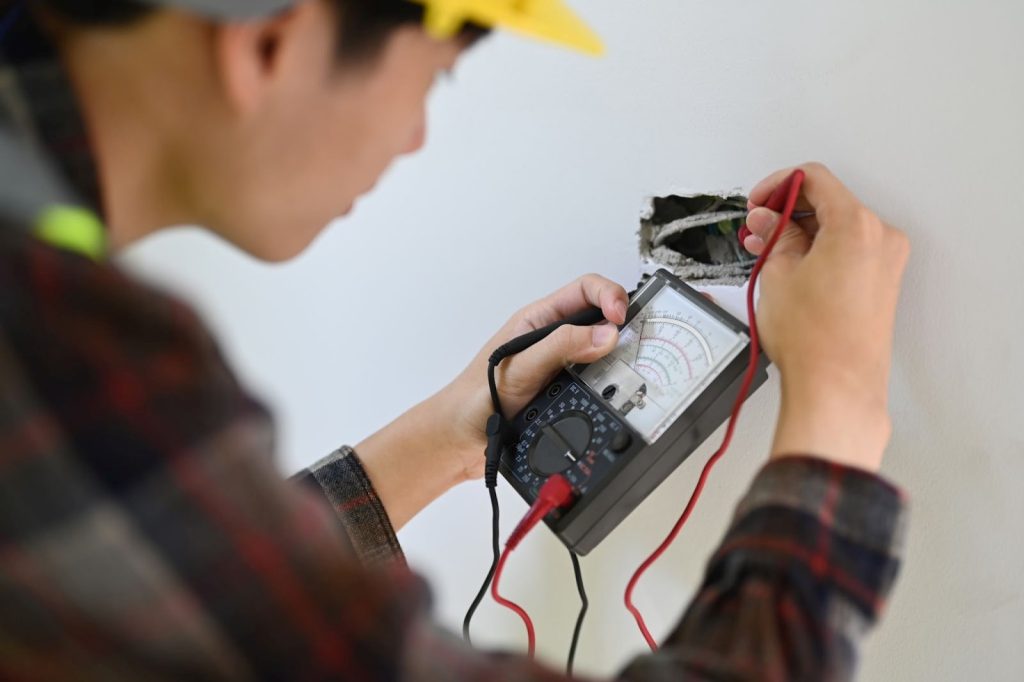Legionella bacteria can be found in a variety of water sources. In nature its presence in numbers is limited. However, Legionella is virulent and poses a threat to people when it finds a poorly maintained or managed water system. Controlling Legionella bacteria in hot and cold water systems is critical if people are to be kept safe.
What is Legionella?
Legionnaires’ disease is a severe form of pneumonia, which is an infection of the lungs. The Legionella bacteria was discovered after an outbreak at a Philadelphia convention of the American Legion in 1976. People become infected with Legionella by breathing contaminated water particles in the air.
Warm water (between 20 and 45 degrees Celsius) is favourable for the growth of the Legionella bacteria. Water systems in hospital buildings, as well as whirlpool spas in hotels and cruise ships, have been connected to multiple outbreaks.
Each year, about 7% to 13% of pneumonia contracted in the United Kingdom is caused by the Legionella bacteria, which causes Legionnaires’ disease (source). However, because many cases aren’t identified or reported, the actual number of infections is likely to be higher. Some cases are so minor that those who are affected never seek treatment.
Many people who are exposed to Legionella do not become ill as a result of their exposure. When illness does strike, though, it’s critical to consult a doctor as soon as possible. Legionnaires’ disease is a life-threatening condition that requires immediate medical attention.
Legionella can also cause Pontiac fever, which is a lesser version of the Legionnaires’ disease. Pontiac fever differs in that it is not contagious and does not cause pneumonia. It has symptoms that are similar to a moderate flu and normally clears up on its own. Legionellosis is a collective term that refers to Pontiac fever, Legionnaires disease, and other bacteria of the same family.
How often should water system be checked for Legionella?
Where is Legionella found?
Legionella can be found in natural freshwater environments in small quantities. When the bacteria proliferate in water management systems, it becomes a considerable health concern. Water systems where Legionella can be found include:
- Showerheads and sink faucets
- Hot tubs
- Decorative fountains
- Hot water tanks
- Complex plumbing systems
At what temperature does Legionella grow?
Temperatures ranging anywhere between 20 and 45 degrees Celsius provide the Legionella bacteria with ideal circumstances for rapid growth. These temperatures should be avoided in any water system, but particularly in high-risk systems with vulnerable people present (in health care facilities or commercial stores for example).
Which water systems are at risk of Legionella contamination?
Any human-made water system could be contaminated with Legionella such as:
- Water outlets for both hot and cold water
- Cooling towers
- Spas and hot tubs
- Water features and decorative fountains
- Water-based industrial processes
Every company or landlord with hot and cold water outlets must do a risk assessment to establish the level of risk on their premises. There will be no real risk for some organisations, but others, such as those in the healthcare industry, will need to take extra precautions to mitigate the risks as much as possible.
How do you prevent Legionella in water systems?
To prevent Legionella in water systems people should conduct a comprehensive risk assessment of their hot and cold water systems, and verify that suitable controls are in place to mitigate the risks. These are great initiatives to prevent Legionella:
- Use temperature control
- Manage stagnant water
- Hire a Legionella inspector
Use temperature control
Water temperature management is the most common strategy for reducing Legionella risk.
Water services should be operated at temperatures that prevent Legionella growth:
- Calorifiers should hold water at 60°C or above;
- Hot water should be delivered at a temperature of 50°C or above;
- Cold water should be kept and delivered at temperatures below 20°C.
In accordance with the risk assessment, a competent firm should examine, inspect, and clean the system regularly. For monthly distribution temperature checks, you must identify sentinel outlets (the ones that are farthest and closest to each tank or cylinder).
You should also check the temperatures of the hot water storage cylinder and the cold water tank at least once every six months. Cold-water storage tanks should be cleaned on a regular basis, and water from hot water storage should be drained to check for debris or corrosion yearly.
Manage stagnant water
Legionella bacteria reproduce more quickly in stagnant water. As a result, unused or infrequently used outlets and pipes should be cleaned on a regular basis. Any piping installations with dead legs or dead ends should be removed. Temperatures should also be measured weekly at sentinel outlets at the closest and farthest points from every water tank if you suspect the presence of Legionella.
(source)
Having a plumber or certified Legionella specialist inspect your water system is highly recommended. This will ensure that there aren’t any redundant pipes in your water system.
Hire a Legionella inspector
Even if a thorough Legionella risk assessment is performed, an effective Legionella control of water systems is only as good as the person in charge of the inspection. A competent individual is someone who has been trained to monitor and inspect water systems, and who knows control measures to prevent the spread of Legionella. Samples of water should be sent to a lab rather than conducting a cheap and corruptible at-home test.
Additional controls
Water samples should be tested for Legionella regularly depending on the results of the risk assessment. The frequency should be set by the level of risk reported. Copper and silver ionisation, as well as biocide treatments, are other ways to control Legionella.
To ensure that they remain successful prevention methods, these add-ons to your water system need to be part of a comprehensive water treatment plan that includes correct installation, maintenance, and monitoring.
Legionella Risk Assessment and PAT testing service
We offer a comprehensive range of Legionella control and environmental solutions to prevent this bacteria from contaminating your drinking water. Our assessments are carried out by a water hygiene professional at a time that suits you. They take around 30 minutes depending on the size of your premises.


